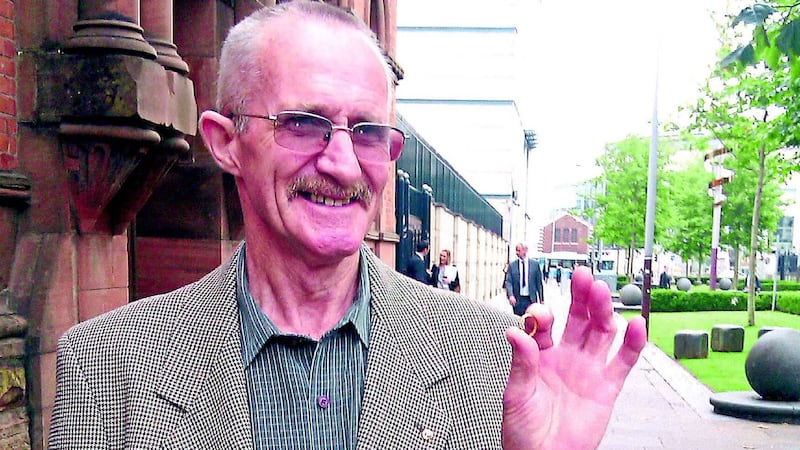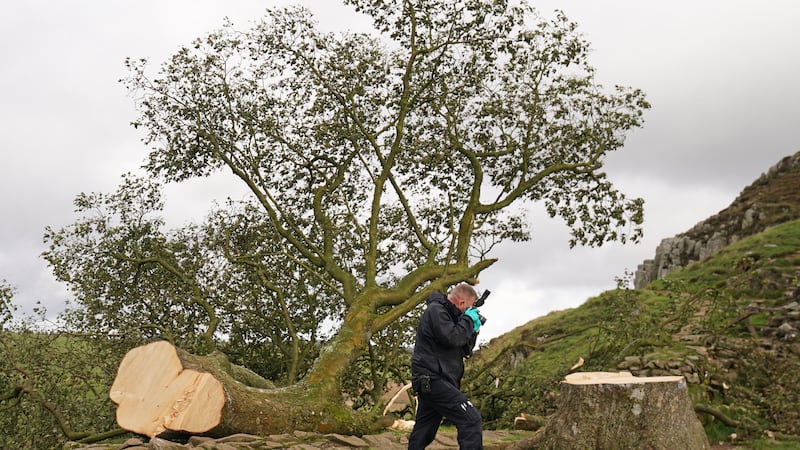A lovers' gold ring engraved with an Old English romantic message has been unearthed by a treasure hunter more than 300 years since it was lost.
Marie Louise McConville reports
GOLD ring found in a field in Co Antrim by a great-grand-father who thought it was nothing more than a piece of "rubbish" has been declared Treasure by a Belfast court.
Pensioner Thomas Ross found the rare 'Posy' ring last September in a farmer's field near Newtownabbey, Co Antrim while out with his metal detector.
The delicate ladies adornment, which has been dated to the late 1600s and is 85 per cent gold, bears the Old English inscription "I noght on gift bot gifer" - which translated means "Look not on the gift, but the giver".
Also known as a betrothal ring, it pre-dates the custom of proposing with an engagement ring, but essentially served the same purpose.
Mr Ross (69) told a treasure trove inquest in Belfast Coroners' Court that he initially thought his find on September 15 last year was a worthless trinket.
"I thought it was a bit of rubbish," the retired oil distributor from Jordanstown, Co Antrim, told coroner Suzanne Anderson.
"I've found rings in the past, which were rubbish," he said.
However, after passing the find to the Ulster Museum, it then found its way to experts at the National Museums Ireland, who deemed it a genuine historical artefact.
The "rare" gold ring, which has been dated to between 1680 and the 1700, is engraved on the outside with foliate designs and has traces of black and white enamel in the chasing.
Elise Taylor, a curator in Applied Arts for National Museums Ireland, believes the ring, which was made for a woman, may have been lost by a lady walking to a church or an adjoining cemetery, both of which were once located near the site where the item was found.
As such rings were not made to be worn over gloves, it may have become loose in cold weather and slipped off her finger.
Originally given as a gift of friendship, Ms Taylor said the rings later become lover's gifts, betrothal rings, with inscriptions engraved on the inside of the ring with a message about the sanctity of marriage. Any woman who accepted such a ring was therefore accepting an offer of marriage.
After hearing evidence coroner Ms Anderson said she was "very happy" to "declare the find is treasure".
The ring will now be sent off to the British Museum for valuation.
Speaking after, Ms Taylor described the find as "quite rare", adding that such rings were "very personal and sentimental".
"The poem (inscribed) is yours, it's a secret."

